
Don't Get "Ticked" | Everything you need to know
Monday, June 18, 2018
By: Lisa M. Genier - Adirondack Council Program Analyst
With the warmer weather finally here, we’re all anxious to get outdoors and hike our favorite trails, play golf or even just have a BBQ in our back yards. But we must be on the look-out for the tiny creatures that can make us and our pets sick…ticks!
While tick bites can happen year-round (even on 40-plus degree days in the winter) people are especially susceptible in mid-May through July, when nymphs (young ticks) are out seeking a host. And unfortunately, ticks and the illnesses they carry are on the rise…especially in New York State and the Adirondacks. Now more than ever, we must be vigilant to protect ourselves, our families and our furry friends from ticks and the diseases they can pass on.
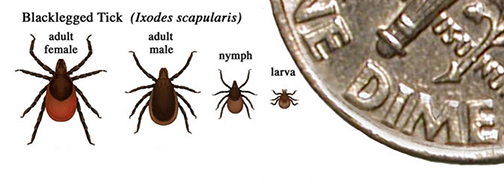 Tick Borne Illnesses High in New York and the Adirondacks
Tick Borne Illnesses High in New York and the Adirondacks
The federal Center for Disease Control and Prevention recently reported that ticks and insect spread illnesses are on the rise and New York State is in the top 20 percent when it comes to cases. While the incidents of Lyme disease have increased 1.5-fold statewide over the past 13 years, counties in the Adirondacks have seen a twentyfold jump in the same period.
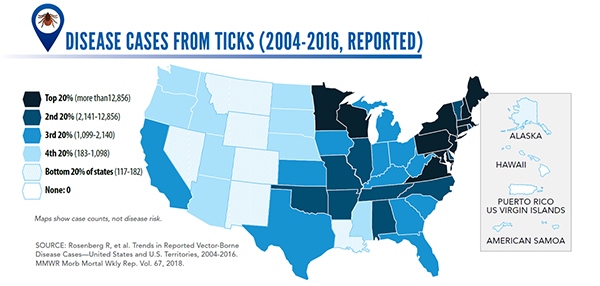
Paul Smith’s College, in collaboration with the New York State Department of Health, has been monitoring the tick population and pathogens in the Adirondack region. They have found an increase in infected ticks carrying bacteria that causes Lyme disease. But they also found, for the first time ever in the North Country, ticks carrying the agent that causes babesiosis. Babesiosis is a malaria-like illness that was historically encountered in the Hudson Valley and coastal New England.
Different Types of Ticks Cause Different Illnesses
You might think that there’s only one type of tick that carries all of the same bacteria. That’s not the case. There are several different types of ticks across the country, but two distinct ticks that are most common in New York State and the Adirondacks.
The Blacklegged Tick
Ixodes scapularisCarries several bacteria which cause Lyme disease, anaplasmosis, Borrelia miyamotoi disease, ehrlichiosis, babesiosis, and Powassan virus disease.
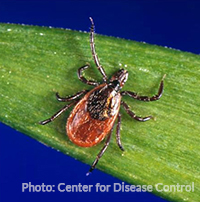
The American Dog Tick
Dermacentor variabilisCarries several bacteria which cause tularemia and Rocky Mountain spotted fever.
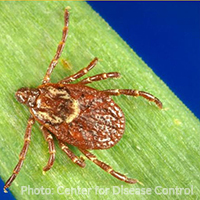
Why So Many Ticks?
According to Dr. Richard S. Ostfeld a Disease Ecologist at the Cary Institute of Ecosystem Studies, one of the reasons ticks are flourishing is warmer winter and spring temperatures due to climate change. Ticks are expanding their range northward and nymphal ticks are emerging earlier in the spring because of warmer spring weather. This in turn is increasing the risk of tick-borne diseases.
New State Control Plan Unveiled
To help combat this tick epidemic, Governor Cuomo in May unveiled a statewide tick-borne disease control plan. Its goals are to control tick populations on public lands, increase public awareness and education aimed at hikers, hunters and others at high risk, increase access to available data, and create a working group to participate in a Lyme disease summit this summer. In addition, the plan directs the state Department of Health to work with partners to develop better diagnostic tests for tick-borne illnesses.
How to Protect Yourself (Source: New York State Department of Health)
Just because ticks are on the rise doesn’t mean we can’t or shouldn’t enjoy outdoor activities. We need to learn how to protect ourselves. Here are some tips:
- Wear light-colored clothing. This makes it easier to spot ticks.
- Wear enclosed shoes, long pants and a long-sleeved shirt. Tuck pant legs into socks or boots and shirt into pants.
- Frequently check clothes and exposed skin for ticks while outdoors.
- Consider using insect repellent.
- Stay on cleared trails. Walk in the center of trails, and avoid dense woods and bushy areas.
- Avoid sitting directly on the ground.
- Bathe or shower as soon as possible after coming indoors (preferably within two hours) to wash off and more easily find ticks that may be on you.
- Do a final, full-body tick check at the end of the day, and promptly remove ticks.
- Check your pets for ticks after coming indoors. Not only can your pets get sick from tick bites, but the ticks can move from them to you.
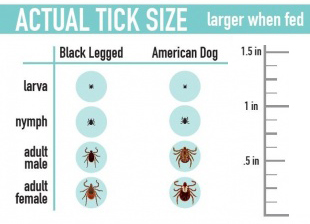 What to Do if You Get Bitten
What to Do if You Get Bitten
If you find a tick attached to your skin, don’t panic. The best thing to do is remove it as soon as possible. Here are some hints on how to best remove a tick.
- Use fine-tipped tweezers to grasp the tick as close to the skin’s surface as possible.
- Pull upward with steady, even pressure. Don’t twist or jerk the tick; this can cause the mouth-parts to break off and remain in the skin. If this happens, remove the mouth-parts with tweezers. If you are unable to remove these pieces easily, leave it alone and let the skin heal.
- After removing the tick, clean the area with rubbing alcohol or soap and water.
- Never crush a tick with your fingers. Dispose of a live tick by putting it in alcohol, placing it in a sealed bag/container, wrapping it tightly in tape, or flushing it down the toilet.
Or you can use a tick remover tool that you can purchase online or in stores. However, if you get bitten by a tick, don't wait to purchase the tool. Remember, the key is to remove the tick as soon as possible.
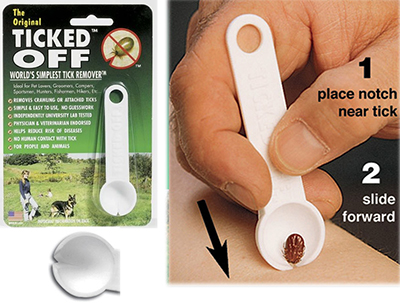 If you develop a rash or fever within several weeks of removing a tick, see your doctor. Be sure you tell about your recent tick bite and when it occurred.
If you develop a rash or fever within several weeks of removing a tick, see your doctor. Be sure you tell about your recent tick bite and when it occurred.
That's What You Need to Know
So now that you know all about ticks, go and enjoy the outdoors. Make sure to take the necessary precautions...and don’t get ticked!
Still Want More Information?
Center for Disease Control and Prevention
Cornell – College of Agriculture and Life Sciences
 Lisa M. Genier joined the Council in 1992 working as its Legislative Associate in the Albany office. During her tenure, she played a role in the creation of the Environmental Protection Fund, which has been used to fund land purchases and environmental programs in the Adirondack Park and around the state. She was also a member of the negotiating teams that worked on re-licensing agreements for several hydroelectric facilities in the Park, which preserved thousands of acres of land, expanded recreational opportunities, and protected other natural resources. Lisa now works part-time as Program Analyst writing action alerts, interacting with members, managing the Council’s website, and serving in a consultative role on legislative and other issues.
Lisa M. Genier joined the Council in 1992 working as its Legislative Associate in the Albany office. During her tenure, she played a role in the creation of the Environmental Protection Fund, which has been used to fund land purchases and environmental programs in the Adirondack Park and around the state. She was also a member of the negotiating teams that worked on re-licensing agreements for several hydroelectric facilities in the Park, which preserved thousands of acres of land, expanded recreational opportunities, and protected other natural resources. Lisa now works part-time as Program Analyst writing action alerts, interacting with members, managing the Council’s website, and serving in a consultative role on legislative and other issues.




